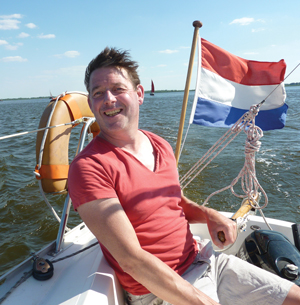 And the winner comes from?
And the winner comes from?The race among OEMs to have the tallest turbine with the highest capacity on the market has been going on for years, especially when it comes to the offshore market. The capacity of offshore wind turbines has more than doubled in less than 10 years. For example, in 2014, Siemens started serial production of its SWT6.0, a 6MW turbine, specifically designed for offshore. The largest model that Siemens Gamesa is now offering is the SG 14-236 direct-drive (DD), which has a capacity of up to 15MW. Serial production for this model will start in 2024. The biggest Siemens Gamesa turbine in serial production is currently the SG 11.0-200 DD turbine.
General Electric (GE) is also participating in this race. Initially, it entered the offshore market by acquiring Alstom and its Haliade 150-6MW turbine in 2014. In 2018, the company announced the development of its Haliade-X platform, which started with a 12MW version. In December 2022, GE received a full type certificate for operations up to 14.7MW from DNV for its Haliade-X 14.7MW-220 turbine. The first use of the certification will be for the 3.6GW Dogger Bank Wind Farm in the UK. Installation of the Haliade-X turbines onto each of the installed turbine foundations will commence in spring 2023.
The third (western) OEM with a large market share is Vestas (formerly MHI Vestas). Vestas’s largest offshore turbine in serial production is its V174-9.5MW, which the company launched in 2019. Vestas is also working on a 15MW turbine. Its V236-15.0MW was introduced to the market in February 2021 and the installation of the prototype turbine was completed in December 2022 at the Østerild National Test Centre in western Jutland, Denmark. Serial production is scheduled for 2024. As it looks now, the company will not work on a larger model. In a recent interview, CEO Henrik Andersen said the company is not planning a larger model, larger turbines coming with transport issues and other challenges. Instead, the company will focus on scaling manufacturing output and efficiency.
Recently, the 15MW threshold set by western OEMs has been broken by Chinese companies.
In January 2023, Mingyang Smart Energy released an 18MW turbine, the MySE 18.X-28X. The MySE 18.X-28X features 140-metre-long blades, a rotor diameter of over 280 metres, and a swept area of 66,052 square metres. The company did not share information about when a prototype of the turbine will be installed or when it will enter the commercial market.
Besides Mingyang, China Shipbuilding Group Haizhuang Wind Power has launched an 18MW turbine – its new H260-18MW offshore wind turbine. The H260-18MW offshore wind turbine features a rotor diameter of 260 metres, and a swept area of 53,000 square meters.
Goldwind is also participating in the race. In December 2022, Goldwind, together with China Three Gorges (CTG), assembled the first nacelle of its 16MW offshore wind turbine. The first nacelle has rolled off the assembly lines from a factory in Fujian Province in China. The turbine has a 252-metre rotor diameter and a 50,000-metre swept area.
Goldwind and CTG have already said they will target the Chinese offshore wind market with the 16MW turbine. Since the Chinese offshore wind market is enormous, I expect the other Chinese OEMs will focus on their home market as well. Of the 33 total new offshore wind farms installed in the first half of 2022, 25 were in China. About 45% of the world’s total offshore wind capacity is now installed in China, and it is expected that this market will continue to be the largest growth market for a while.
To conclude, the Chinese will probably win the race regarding the turbine with the highest capacity. They will fiercely compete in their home market but not yet (or not soon) with western OEMs for projects in Europe and the USA. The competition in Europe and the USA is already fierce enough. As I wrote in my last note, all western OEMs are facing challenging times. This is mainly caused by the current market environment, with higher costs and issues with supply-chain reliability.
So if you ask me, focusing on scaling manufacturing output and efficiency for the western OEMs is not such a bad idea. Time will tell.
Enjoy reading,
Floris Siteur








